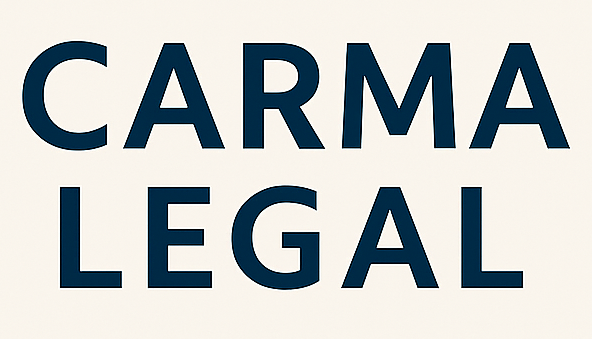Understanding dangerous product injuries
If you have been harmed by a faulty device or unsafe appliance, a dangerous product injury lawyer can help protect your rights and guide you through the legal process. Dangerous products range from defective medical devices to machinery with inadequate safety features. When manufacturers, distributors, or retailers cut corners, consumers and workers can suffer serious injuries that require medical treatment, rehabilitation, and in some cases, lifelong care.
Common scenarios include toys with choking hazards, pharmaceuticals with undisclosed side effects, and power tools lacking proper guards. Injuries can vary from minor cuts and bruises to catastrophic harm such as amputation, neurological damage, or even wrongful death. Understanding the nature of these injuries and your legal options is the first step toward holding negligent parties accountable.
Defining dangerous products
Dangerous products are those that pose unreasonable risks when used as intended or in a foreseeable way. Three main defect categories exist:
- Design defects: Flaws in the blueprint or specifications that make every unit unsafe.
- Manufacturing defects: Errors in production that turn an otherwise safe design into a hazard.
- Marketing defects (failure to warn): Insufficient instructions or warnings about known risks.
By identifying the defect type, you and your lawyer can tailor your strategy to prove liability and secure fair compensation.
Common injury types
Victims of defective products may experience:
- Traumatic injuries (fractures, lacerations, burns)
- Internal injuries (organ damage, bleeding)
- Neurological harm (brain injury, nerve damage)
- Long-term complications (chronic pain, disability)
- Emotional distress (anxiety, depression)
Prompt medical attention not only protects your health but also creates documentation crucial for your claim.
Exploring third party liability
When a defective product injures you at work or in daily life, liability often extends beyond workers’ compensation. Third-party liability claims arise when parties other than your employer share responsibility for your harm.
Liability outside workers’ comp
Workers’ compensation typically covers on-the-job injuries, but it may not apply if:
- A third party, such as a product manufacturer, caused your injury.
- The product was used outside of your employment duties.
- Your employer lacks coverage or you are an independent contractor.
In these cases, you may pursue a workplace injury lawyer third party claim or consult a third party injury claim lawyer to explore additional avenues for recovery.
Parties who may be liable
Potential defendants in a product injury lawsuit include:
- Manufacturers and designers
- Component suppliers and assemblers
- Distributors and wholesalers
- Retailers and installers
Holding each party accountable can maximize your compensation. An experienced defective product attorney or manufacturing defect attorney will investigate the entire supply chain to identify negligent actors.
Proving a product liability case
Establishing liability in a product injury claim requires meeting specific legal elements and gathering solid evidence. Your lawyer will guide you through each step.
Key legal elements
To win a product liability lawsuit, you must show:
- The product was defective in design, manufacturing, or marketing.
- You used the product as intended or in a foreseeable way.
- The defect directly caused your injury.
- You suffered actual damages, such as medical bills or lost wages.
These elements align with strict liability principles in states like Pennsylvania, where negligence need not be proven [1].
Gathering evidence
Your attorney will coordinate with experts to build a persuasive case:
- Accident reconstructionists to recreate the incident scene
- Product safety engineers to analyze design and manufacturing processes
- Medical experts to document injury severity and causation
Detailed photographs, medical records, maintenance logs, and communication from the manufacturer all strengthen your claim.
Illustrative case outcomes
Major law firms have secured significant settlements in product liability litigation:
| Case | Settlement amount | Firm |
|---|---|---|
| 3M combat arms earplug defects | $6 billion | Seeger Weiss |
| Philips CPAP and ventilator device failures | $550 million (uncapped) | Seeger Weiss |
| National prescription opioid litigation | $51 billion | Seeger Weiss |
These figures highlight the stakes and the impact of holding companies accountable for defective products.
Statute of limitations and deadlines
Acting promptly is essential in product injury claims. Every state sets a deadline—known as the statute of limitations—after which you may lose the right to sue.
Ohio deadlines
In Ohio, injured parties have two years from the date of injury or reasonable discovery to file a claim [2]. Missing this window can bar your case entirely.
Pennsylvania rules
Pennsylvania law also provides a two-year statute of limitations for product liability actions, starting from injury or when harm should have been discovered [1].
Importance of prompt action
Early consultation with a product liability lawyer ensures:
- Preservation of critical evidence
- Timely expert evaluations
- Compliance with procedural requirements
Delaying could jeopardize witness memories, physical evidence, and your legal rights.
Seeking compensation for your injuries
When a court or insurer acknowledges liability, you may recover various types of damages to address the harm you endured.
Economic damages
These cover quantifiable financial losses, including:
- Medical expenses (hospital bills, rehabilitation)
- Lost wages and reduced earning capacity
- Property damage
- Future care costs
Non-economic damages
Compensation for intangible losses, such as:
- Pain and suffering
- Emotional distress
- Loss of enjoyment of life
Punitive damages
In cases of reckless or malicious conduct by a manufacturer, courts may award punitive damages to punish wrongdoers and deter similar behavior.
How a dangerous product injury lawyer can help
From the moment you reach out, a skilled attorney will manage all aspects of your claim so you can focus on recovery.
Case evaluation and investigation
- Review medical records and incident reports
- Inspect the defective product and secure it as evidence
- Consult with technical and medical experts
Negotiation and settlement
- Calculate fair compensation for your losses
- Present a compelling demand package to insurers or manufacturers
- Negotiate settlement terms and release agreements
Litigation and trial representation
If negotiations stall, your lawyer will:
- File a lawsuit and handle all court filings
- Question witnesses and experts during depositions
- Advocate for you at trial, presenting evidence before a judge or jury
Selecting the right attorney
Choosing counsel with the right blend of experience, communication skills, and commitment is crucial for a successful claim.
Experience and track record
Look for a lawyer who:
- Specializes in product liability and third-party claims
- Has secured substantial verdicts or settlements
- Understands local laws and court procedures
Communication and availability
Strong communication skills help you stay informed and confident about your case [3]. Ensure your attorney:
- Responds promptly to your questions
- Provides clear explanations of legal concepts
- Keeps you updated on case developments
Fee structure and contingency
Most dangerous product lawsuit attorneys work on a contingency basis, meaning you pay no fees unless you recover compensation. This arrangement makes legal representation accessible and aligns your lawyer’s interests with yours.
Next steps after an injury
Taking timely action can preserve your rights and strengthen your case.
Preserve evidence and document details
- Retain the defective product in its current condition
- Photograph the scene, injuries, and product labels
- Save all receipts, manuals, and warranty information
Seek medical attention
Prompt treatment safeguards your health and creates a clear medical record linking the defect to your injuries.
Consult a lawyer promptly
Contact a dangerous product lawsuit attorney or injury from defective equipment lawyer as soon as possible. Early legal counsel ensures you meet deadlines and secure evidence before it disappears or is altered.
By understanding your rights and working with a qualified lawyer, you can pursue full compensation for the harm you have suffered. Taking these steps today lays the foundation for a stronger claim and a clearer path to justice.








